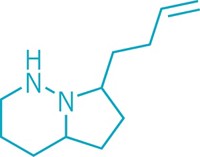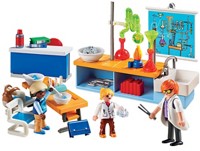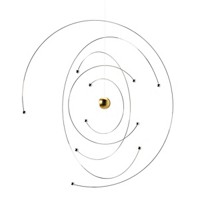Advertisement
Grab your lab coat. Let's get started
Welcome!
Welcome!
Create an account below to get 6 C&EN articles per month, receive newsletters and more - all free.
It seems this is your first time logging in online. Please enter the following information to continue.
As an ACS member you automatically get access to this site. All we need is few more details to create your reading experience.
Not you? Sign in with a different account.
Not you? Sign in with a different account.
ERROR 1
ERROR 1
ERROR 2
ERROR 2
ERROR 2
ERROR 2
ERROR 2
Password and Confirm password must match.
If you have an ACS member number, please enter it here so we can link this account to your membership. (optional)
ERROR 2
ACS values your privacy. By submitting your information, you are gaining access to C&EN and subscribing to our weekly newsletter. We use the information you provide to make your reading experience better, and we will never sell your data to third party members.
Education
Newscripts
Chemical Wooing, Configurational Isocats
by Rachel S. Pepling
December 20, 2010
| A version of this story appeared in
Volume 88, Issue 51

In preparation for the holiday party season, chemists might be searching for their own digital Cyrano de Bergeracs to feed them lines worthy of wooing their objects of desire. If looking for eloquence and romance, perhaps they should not turn to the social networking website Twitter for guidance. There, they can find the perfect pickup line instead.
Early last month, the Twitterverse was, ahem, atwitter with 140-character CHEMISTRY PICKUP LINES after a prompt from tweeter @FakeScience: “Chemist pickup artists used their best lines to get Avogadro’s number.” Gems from other users were submitted shortly thereafter:
■ I’m cobalt and you’re nickel. Let’s make an alloy.
■ I’d like to form a covalent bond with you.
■ You’re so hot, your electrons are changing state.
■ You’re lutetium and I’m vanadium. Together, we’re in LuV
■ Are you part of the Krebs cycle? ’Cause you make me want to transfer electrons.
■ If I could rearrange the periodic table, I’d put U and I together.
■ If I were an enzyme, I’d be a helicase so I could unzip your genes.
■ Our love will be like sodium in water: brief, explosive, and hot.
Surely, some of these lines have been floating around bars and parties for ages. In fact, one or two showed up in an online discussion thread (“A request for cheesy chemistry-related pickup lines”) in 2007 on the Chemical Forums website. No reason was given for the request, nor did many participants fess up to having any success with their lines.
other online news, cats are coming to the rescue of hapless organic chemistry students via the Web. James A. Ashenhurst is an organic chemistry postdoc at Hebrew University of Jerusalem who wants to “put the image of organic chemistry as a horror movie to rest. Or at least make it less scary and more campy.” And what better way to accomplish that goal than with CUTE, FLUFFY KITTIES? Ashenhurst has been tutoring chemistry since April and uses his website, “Master Organic Chemistry,” to try out different methods for teaching organic chemistry to undergraduates, including online study sessions and configurational “isocats.”
Stereochemical concepts can be tough for students to grasp. But cats? Well, cats are easy. Cats and chemists go together like the dynamic Muppet duo Beaker and Dr. Bunsen Honeydew. “Also, cute pictures of cats are great drivers of Internet traffic,” Ashenhurst says. And cats are so plentiful around the university that Ashenhurst has a variety of models to explain enantiocats, diastereocats, and the like.
For example, Freaky Sawhorse Cat has a leg and tail interchanged to demonstrate configuration. Low-energy conformation and high-energy conformation are represented, respectively, by a resting cat and the same cat standing on its hind legs. Finally, there’s the Cat Line Diagram (or, for traditionalists, a line-wedge diagram) to aid in analyzing molecules, er, felines of different sizes, shapes, and ages.
It’s too early to tell what impact isocats will have on organic educational techniques. Ashenhurst introduced his isocats just last month, which is past the point in the semester when students cover stereochemistry. “I don’t know if it’s really clarified the concepts for anyone, but it seems to have some entertainment value,” he says.





Join the conversation
Contact the reporter
Submit a Letter to the Editor for publication
Engage with us on Twitter